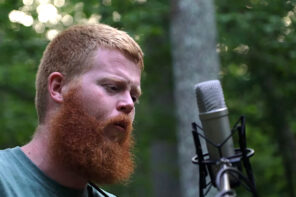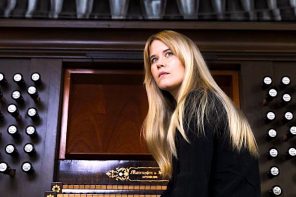Since 2002, the Bonnaroo Music and Arts Festival has become a summer rite for thousands who flock to 700 acres of farmland near Manchester, Tennessee, for four days in June. Some 150 acts—from the biggest names in rock and popular music to the latest comers in the indie scene—perform on seven stages all day and into the long, long night. The crowds milling across the festival landscape make the human landscape as impressive a spectacle as the aural one.
This year, at a backstage press conference, Phil Lesh was asked about the origins of rock festivals like Bonnaroo. As a member of the Grateful Dead and now the leader of his own band, Lesh has seen the form evolve over the last forty years. But to answer the question, he reached back even farther in history. “It’s always something that’s been part of human culture,” he said. “In the nineteenth century, they had town camp meetings. Whole towns would go to camp out, play music, and pray… That’s kind of what this has become… Nobody invented this. This is something that human beings need to do.”
Consciously or not, Lesh was taking a page from the books of scholars who have written about festival gatherings producing a kind of communal, spiritual space, at once sacred and profane, to become the contemporary descendents of their more explicitly religious forebears. Like revivals and camp meetings from the nineteenth century forward, the festivals allow participants to suspend their everyday lives to engage in something that is both theatrical and ecstatic. Events like Burning Man, an eight-day annual event in the Black Rock Desert of Nevada, have attracted particular scholarly attention for the way that they allow participants to create impromptu communities, to be arbiters of their own rules, and to create thick meaning for themselves through social interaction.
A festival like Bonnaroo, though, is different from Burning Man—and even distinct from the archetype of the rock-and-roll happening, Woodstock. There are no organic communities here springing from the grass roots upward. No one breaks down barricades for tickets, abandons cars by the side of the highway, or creates spontaneous parades. Like the other events of the festival circuit (Lollapalooza, Coachella, Austin City Limits), Bonnaroo is a top-down affair staged by skilled, professional producers. In 2007, the festival revenues reportedly topped $17 million, making it the highest-grossing event of its kind in the world.
Yet the planners behind Bonnaroo must know about the camp meeting tradition as well, because they promote the event as offering more than a spectacular music delivery system. They promote the festival as environmentally conscious, bragging about the tons of recycling and even composting that the event yields each year. They devote resources to cultivating fan communities through their own Internet bulletin boards. And they try to create their own insider vocabulary, with camping areas labeled like a pop culture quiz (Camp Marty McFly, anyone?) and cryptic, confusing names for the performance stages like “Which?” and “What” The festival map reads like a template for combining consciousness-raising with social bonding. Bonnaroo aspires to play, but deep play.
But what chance is there for deep experience at an event that counts Microsoft, Nokia, and Gillette among its sponsors? Does the camp meeting tradition of awakenings—great or otherwise—stand a chance in the twenty-first century culture of corporate planning?
The best place to start answering those questions may not be in the “entertainment village” where the performances transpire amidst the carnival of tents, booths, and stages, but in the land that surrounds them. Between 75 and 80,000 people attend Bonnaroo each year, and organizers estimate that over 90 percent of them camp (some in recreational vehicles, but most not), forming a closely-packed domed city of tents, tarps, and the SUVs that brought them here. At a time when Americans are building the largest homes in their history, most of those who come to Bonnaroo choose to spend a four-day weekend in a kind of urban primitivism: sleeping and eating a few feet from their neighbors, washing in muddy, communal cold-water stations, and braving a Tennessee summer of heat and humidity.
Journalists like to characterize the Bonnaroo crowd as latter-day hippies, conjuring images of hedonistic abandonment. What they miss, however, are the quieter rituals of the campground. To be sure, many of those who come for the festival indulge in drugs and alcohol, and some do so to excess. Yet the escapism of the festival, the generation of a temporary space with its own patterns and lifeways, is not simply a matter of tuning out and turning on. Instead, the most remarkable thing that you can see in the Bonnaroo campground are groups of people, primarily under 30, sitting in circles and talking.
They drink; they smoke; they cook. The campground, after all, is a site of makeshift domesticity, and the intense proximity means that it all takes place in public. But the chance to see so many people engaged in extended, face-to-face, Blackberry-free communication—sitting in their camp chairs, lying on blankets—may be the most remarkable sights of the entire event. These might be high school friends who now attend different colleges, perhaps twenty-somethings at the beginnings of their adult lives. There are older campers as well, and some multigenerational families. Some have driven for days (our neighbors this year came from New Jersey, Pennsylvania, and Ontario) and many of them have been here before. They have their own stories to tell and re-tell to each other, and will have new ones before they pack up their gear and return home.
These are small circles—maybe four, six, eight—and small rituals. Neither the kind of utopian impulses of Burning Man nor the kind of revolutionary purpose of Woodstock are on the table here. No one is offering the salvation that once brought the nineteenth-century crowds into the fields. But our current moment may call for modest measures. When you ask the festival-goers at Bonnaroo why they have come, most of them will rattle off the name or two of a band, or tell you a story about how an old friend asked them to go, or will give a vague, noncommittal answer about “fun.” What they have done, however, has been to come to an extraordinary social space in order to experience patterns of life that are, at their core, deeply mundane. At a time of global mobility and technological saturation, five chairs in a circle might be the most radical spectacle that a festival could offer.




